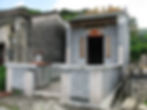
Fung Yuen Cultural Ecology






History of Fung Yuen
The Origin of Fung Yuen
Fung Yuen Village has been established for over 300 years. Six clans surname of Mak, Yip, Sip, Lai, Mok, and Wai, were the first to settle in Fung Yuen, they formed the Luk Sing Tang in Lo Wei (walled village) which means “six surname persons”. Wall was built to protect the lives and properties of the villagers from being looted by bandits. The village is embraced by two mountains with the left known as “Green Dragon” and the right “White Tiger”, it was renamed Fung Yuen Village because the mountain shaped like a phoenix (a magic bird in classical mythology, pronounced as “fung” in Cantonese).
Indigenous Living
The indigenous inhabitants of Fung Yuen Village were mostly Hakka who made a living by fishing at Nam Tau of China and in the vicinity of Sha Tau Kok; they migrated to Fung Yuen and started reclamation for farming. Life was hard at the beginning, however, with the three streams running through the Valley, sufficient water supply made it favorable for farming, since fishing operation has relatively higher risk, gradually most villager stayed in the village to live by farming.
Modern Development
With the change of water resources, vegetables imports, farming for a living becomes difficult. Further development of the Tai Po New Town in 1979, substantial reclamation and construction of industrial zones led to economic transformation, most inhabitants gave up farming since job opportunities had increased; moreover, the income from renting or selling land was higher than farming. In 1980, the 42 hectares of land in the north hillside of Fung Yuen was designated as a “Site of Special Scientific Interest (SSSI)”, using or selling land within the area were restricted. “Fung Yuen Butterfly Reserve” was set up by Tai Po Environmental Association in 2004 to conserve and promote the biodiversity, as well as the cultural characteristics of Fung Yuen Valley to achieve sustainable development.
Three Major Reasons for the High Ecological Value of Fung Yuen
1. River Valley Terrain (Geographical Factors)
Fung Yuen Valley is backed by Cloudy Hill and Sha Lo Tung. The streams flowing from the hills all converge in Fung Yuen, providing ample water sources for the local wildlife, plants, and crops, nurturing and supporting various forms of life.
2. Diversity of Fung Shui Woods Plants (Biological Factors)
The Fung Shui Woods is one of the traditional architectural features of walled villages. When the village was established, the villagers preserved a large area of forestland behind the village, known as the "Fung Shui Woods", believing it would promote prosperity. Consequently, villagers intentionally protect the Fung Shui Woods, restricting unauthorized access. Human disturbances are minimized, allowing for dense plant growth and high biodiversity.
3. Orchards and Farming Activities (Cultural Factors)
In the past, the villagers of Fung Yuen relied on agriculture for their livelihood, leading to rich farming activities. The economic crops not only fed the villagers but also provided food for butterfly larvae and adults, highlighting the close relationship between the villagers' lives and butterfly diversity.